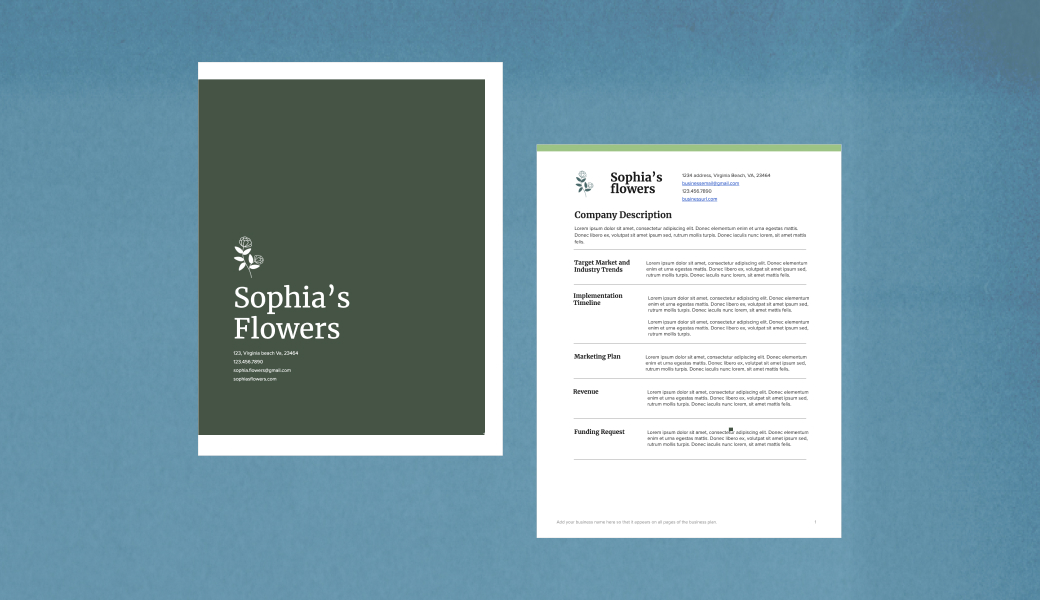TOOLS
BUSINESS PLAN BUILDER
A strong business starts with a plan. Make yours with one of our guided templates.
Get StartedLaunch with guidance on product development, marketing, funding and more
A strong business starts with a plan. Make yours with one of our guided templates.
Get Started
Understand which legal entity works best for your business
A limited liability company (LLC) is a legal structure that combines the limited liability features of a corporation and the tax efficiencies and operational flexibility of a partnership. An LLC can be run by a single person or several managers.
Though most states don’t require LLC’s to have operating agreements, it’s recommended that multimember LLCs file them.
Liability: Establishing your company as an LLC helps protect your personal assets from claims or business debts.
Taxes: In the eyes of the federal government, an LLC is not a separate tax entity, so the business itself is not taxed. Instead, all LLC members pay as part of their personal income tax.
Learn MoreA business or organization owned by and operated for the benefit of those using its services. Profits and earnings generated by the cooperative are distributed among the members, known as user-owners.
Leadership: An elected board of directors and officers run the cooperative while regular members have voting power to control the direction of the cooperative.
Democratic ownership: The amount of a member’s monetary investment in the cooperative does not affect the weight of each vote, so no member-owner can dominate the decision-making process.
Taxes: Most businesses need to register with the IRS, register with state and local revenue agencies, and obtain a tax ID number or permit. Cooperatives do not pay federal income taxes as a business entity.
Learn MoreA corporation is run by directors who are chosen by shareholders; These companies are required to keep minutes of shareholder and director meetings. To have your business taxed as a corporation, you’ll have to file articles of incorporation with your state. C-corp is the default classification for corporations, though business owners may choose the S-corp entity so the business isn’t taxed at the corporation level.
Liability: Corporations protect the directors’ and shareholders’ personal assets.
Taxes: A C-corp’s revenue is taxed and then the shareholders are taxed on the money they receive. Conversely, the IRSt doesn’t tax businesses with an S-Corp tax classification at the corporation level; instead, they tax shareholders based on the company’s revenue.
Learn MoreA partnership is a single business where two or more people share ownership and contribute to all aspects of the business, including money, property, labor or skill. In return, each partner shares in the profits and losses of the business.
Joint and Individual Liability: Partnerships retain full, shared liability among the owners. Partners are not only liable for their own actions, but also for the business debts and decisions made by other partners. In addition, the personal assets of all partners can be used to satisfy the partnership’s debt.
Taxes: A partnership must file an “annual information return” to report the income, deductions, gains and losses from the business’s operations, but the business itself does not pay income tax. Partnership taxes generally include annual return of income, employment taxes, excise taxes and self-employment taxes, among others.
Learn MoreYou do not have to take any formal action to form a sole proprietorship. If you are the only owner, this status automatically comes from your business activities.
Taxes: Because you and your business are one and the same, the business itself is not taxed separately; the sole proprietorship income is your income.
Complete control: Because you are the sole owner of the business, you have complete control over all decisions. You aren’t required to consult with anyone else when you need to make decisions or want to make changes.
Unlimited personal liability: Because there is no legal separation between you and your business, you can be held personally liable for the debts and obligations of the business. This risk extends to any liabilities incurred due to employee actions.
Learn MoreReceive the latest news on events, upcoming webinars, and small business resources, straight to your inbox